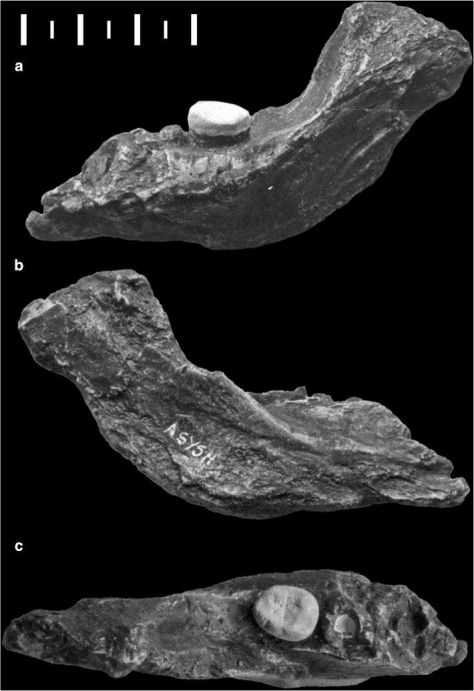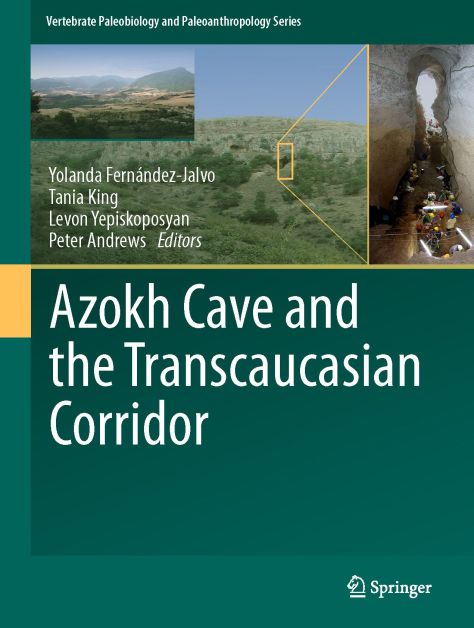NewsNext Previous
The Azokh Cave site in the Caucasus was an important passageway for the hominins during their migration from Africa to Europe and Asia
This is reflected in the first international and multidisciplinary monograph dedicated to the site where the members of the IPHES have big input
Students from this region complete their formation and scientific degree through different international programmes where the IPHES participates too
The study of migratory routs, used by different hominin groups during their migration from Africa to Europe and Asia, is one of the most important branches of investigation. There are different proposals and geographic points, which may have had particular importance. The Azokh Cave site, located in Nagorno Karabakh (Southern Caucasus) is now getting special prominence.
The first international and multidisciplinary monograph dedicated to the excavations and research of Azokh titled “Azokh Cave and the Transcaucasian Corridor” was published by Springer, an international editorial, specialised in science, medicine, and technology.
According to this study, the hominins and different animals inhabited Azokh Cave during their pass from Africa to Europe and Asia around 300 to 100 thousand years ago BP. Moreover, this cave was used by three different hominin species: Homo heidelbergensis, Homo neandertalensis and Homo sapiens, and has almost continuous register of lithic remains (from Middle to Upper Pleistocene) associated with fauna.
 Homo heidelbergensis remains discovered at Azokh Cave – Fernández-Javo et al.
Homo heidelbergensis remains discovered at Azokh Cave – Fernández-Javo et al.
The monograph includes the results of detailed studies of all these remains (hominin, faunal, vegetal and technological) found in Azokh during the excavation seasons of 2002 – 2009. In addition, an important effort was made to contextualise the site in the Caucasus connecting the results obtained from Azokh Cave with other sites of the same chronology and from the same geographic area (e.g., Kudaro I, Kudaro III, Treugol’naya, Tsona, Djruchula, Mezmaiskaya etc.).
More than twenty institutions and research centres from different countries are involved in the monograph’s publication. The IPHES has a great input in it, as five out of fifteen chapters (those of lithic artefacts, macro and micro vertebrate remains, taphonomy and charcoals) are leaded by its researchers and collaborators such as Dr. Isabel Cáceres, Dr. Ethel Allué, Dr. Andreu Ollé, Dr. Hugues A. Blain and Dr. Lena Asryan.
The History
Azokh Cave was discovered by M. Huseinov in 1960’s and was excavated for around twenty years by Russian and Azerbaijani researchers. Almost all the sedimentary infill and fossil contents at the entrance of Azokh 1 was emptied during these excavations leaving a small part at the back of the entrance. During these excavations faunal and lithic remains were recovered together with a hominin mandible fragment in unit V, which was classified as Homo heidelbergensis.
In 2002, an international, multidisciplinary research team restarted the excavations at the site. During these excavations, from Unit V (300.000 years old) together with herbivore (Equus hydruntinus, Equus ferus, Stephanorhinus hemitoechus, Stephanorhinus kirchbergensis, Capreolus pygargus, Dama aff. peloponesiaca, Dama sp., Megaloceros solihacus, Cervus elaphus, Bison schoetensacki, Ovis ammon, Capra aegagrus, Saiga tatarica) and carnivore faunal remains (Canis cf. Lupus, Canis aureus, Meles meles, Martes cf. Foina, Crocuta crocuta, Lynx sp., Felis chaus, Panthera pardus, Ursus spelaeus, Ursus sp.), Middle Pleistocene lithic artefacts (it can be characterised as Late Acheulean or pre-Mousterian without bifaces) and fragments of charcoals were found.
Cave bear (Ursus spelaeus) is present in all the excavated archaeological units, but it is dominant particularly in Unit II with a chronology between 180 to 100 thousand years BP. The cave bear remains are associated with Levallois lithic assemblage in this unit. In addition, a hominin tooth was found at this unit determined as Homo neanderthalensis.
In one of the cave entrances (discovered during 2003 excavation season and named as Azokh 5) remains of Homo sapiens were found dated by 14C between 1.265 and 2.300 years.
Involvement of the IPHES
The IPHES was involved in the “Azokh Caves Project” in 2006 through researchers Ethel Allué and Isabel Cáceres. The participation of the institution was increasing since then, bringing not only experts to the project (they are more than twelve now) but also helping the local students to continue their formation and studies in the IPHES and URV (University Rovira i Virgili) through the international Master’s or pre-doctoral grants in Quaternary and Human Evolution under the supervision of the researchers from the IPHES.
 The monograph includes the results of detailed studies of all these remains (hominin, faunal, vegetal and technological) found in Azokh during the excavation seasons of 2002 – 2009
The monograph includes the results of detailed studies of all these remains (hominin, faunal, vegetal and technological) found in Azokh during the excavation seasons of 2002 – 2009
Doctoral thesis
In this context, Lena Asryan is one of the examples, who studied first the IPHES-URV’s Masters of Erasmus Mundus and then continued the doctoral studies in Quaternary and Prehistory (funded by the Wenner-Gren foundation [WIF-212]) at the same university. In September of 2015 she defended her doctoral thesis titled “Azokh Cave lithic assemblages and its contextualization in the Middle and Upper Pleistocene of South-west Asia”.
This research study is focused on the lithic assemblages of Azokh Cave recovered during the excavations of 2002 to 2013. The study of these assemblages indicates that the human occupation of the cave was short and seasonal in character and that it was alternatively occupied by hominins and large carnivores.
These conclusions are supported also by other studies (geological and paleontological) presented in the monograph, which show occupation of the cave by Ursids for hibernation during the dry periods of the cave (autumn-winter) and opportunistic access of hominins to bear carcases after the hibernation, possibly for obtaining leftover meat, skin and ligaments.
The investigation in Azokh Cave is included within the working lines of the research group known as IPHES-URV “Evolució social, cultual i biológica al Plistocè inferior i Mitjà” (AGAUR, SGR 2014-899) and in the Research Development Programme of the URV (2014PFR-URV-B2-17 and 2015PFR-URV-B2-17).

